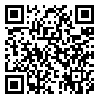1. Ramis Y, Torregrosa M, Viladrich C, Cruz J. The effect of coaches' controlling style on the competitive anxiety of young athletes. Front Psychol. 2017;8:572. [
DOI]
2. Schubert MM, Astorino TA. A systematic review of the efficacy of ergogenic aids for improving running performance. J Strength Cond Res. 2013;27(6):1699–707. [
DOI]
3. Safaei L, Youzbashi M. Comparison of the severity of obsession and working memory in children with obsessive compulsive disorder and healthy children. International Journal of Pediatrics. 2020;8(10):12275–84. [
DOI]
4. Contreras–Osorio F, Guzmán–Guzmán IP, Cerda–Vega E, Chiros–Ríos L, Ramírez–Campillo R, Campos–Jara C. Effects of the type of sports practice on the executive functions of schoolchildren. Int J Environ Res Public Health. 2022;19(7):3886. [
DOI]
5. Gunzenhauser C, Nückles M. Training executive functions to improve academic achievement: tackling avenues to far transfer. Front Psychol. 2021;12:624008. [
DOI]
6. Hill AT, Fitzgerald PB, Hoy KE. Effects of anodal transcranial direct current stimulation on working memory: a systematic review and meta–analysis of findings from healthy and neuropsychiatric populations. Brain Stimul. 2016;9(2):197–208. [
DOI]
7. Ebadi M, Hoseini F, Pahlevan F, Esmaeilzade Akhoundi M, Farhadi V, Asqari R. The effectiveness of transcranial Direct Current Stimulation (tDCS) on working memory in patients with major depression. Journal of Arak University of Medical Sciences. 2017;20(5):38–47. [
Article]
8. Yuan W, Dudley J, Barber Foss KD, Ellis JD, Thomas S, Galloway RT, et al. Mild jugular compression collar ameliorated changes in brain activation of working memory after one soccer season in female high school athletes. J Neurotrauma. 2018;35(11):1248–59. [
DOI]
9. Lin HH, Lin TY, Ling Y, Lo CC. Influence of imagery training on adjusting the pressure of fin swimmers, improving sports performance and stabilizing psychological quality. Int J Environ Res Public Health. 2021;18(22):11767. [
DOI]
10. Kinsella EL, Ritchie TD, Igou ER. Lay perspectives on the social and psychological functions of heroes. Front Psychol. 2015;6:130. [
DOI]
11. Sadler CM, Kami AT, Nantel J, Lommen J, Carlsen AN. Transcranial direct current stimulation over motor areas improves reaction time in parkinson's disease. Front Neurol. 2022;13:913517. [
DOI]
12. Fertonani A, Miniussi C. Transcranial electrical stimulation: what we know and do not know about mechanisms. Neuroscientist. 2017;23(2):109–23. [
DOI]
13. Zamani G, Doostan MR. The effect of transcranial direct current stimulation on working memory and reaction time in athlete girls. Neuropsychology. 2018;3(10):51–62. [Persian] [
Article]
14. Au J, Smith–Peirce RN, Carbone E, Moon A, Evans M, Jonides J, et al. Effects of multisession prefrontal transcranial direct current stimulation on long-term memory and working memory in older adults. J Cogn Neurosci. 2022;34(6):1015–37. [
DOI]
15. Mesquita PHC, Lage GM, Franchini E, Romano–Silva MA, Albuquerque MR. Bi–hemispheric anodal transcranial direct current stimulation worsens taekwondo–related performance. Hum Mov Sci. 2019;66:578–86. [
DOI]
16. da Silva Machado DG, Bikson M, Datta A, Caparelli–Dáquer E, Unal G, Baptista AF, et al. Acute effect of high–definition and conventional tDCS on exercise performance and psychophysiological responses in endurance athletes: a randomized controlled trial. Sci Rep. 2021;11(1):13911. [
DOI]
17. Morya E, Monte–Silva K, Bikson M, Esmaeilpour Z, Biazoli CE, Fonseca A, et al. Beyond the target area: an integrative view of tDCS-induced motor cortex modulation in patients and athletes. J Neuroeng Rehabil. 2019;16(1):141. [
DOI]
18. Seidel O, Ragert P. Effects of transcranial direct current stimulation of primary motor cortex on reaction time and tapping performance: a comparison between athletes and non–athletes. Front Hum Neurosci. 2019;13:103. [
DOI]
19. Kirchner WK. Age differences in short–term retention of rapidly changing information. J Exp Psychol. 1958;55(4):352–8. [
DOI]
20. Kane MJ, Conway ARA, Miura TK, Colflesh GJH. Working memory, attention control, and the N–back task: a question of construct validity. J Exp Psychol Learn Mem Cogn. 2007;33(3):615–22. [
DOI]
21. Taghizade T, Nejati V, Mohammadzade A, Akbarzade Baghban A, Nejati VN. Evolution of auditory and visual working memory in primary school–aged children. Journal of Research in Rehabilitation Sciences. 2014;10(2):239–49. [Persian] [
Article]
22. Charbonneau D, Barling J, Kelloway EK. Transformational leadership and sports performance: the mediating role of intrinsic motivation. Journal of Applied Social Psychology. 2001;31(7):1521–34. [
DOI]
23. Aaghababa A, Kashi A. Effect of mindful meditation on the mindfulness' state, flow state and sport performance. Sport Psychology Studies. 2018;7(25):89–110. [Persian] [
DOI]
24. Salehian MH, Qadiri S. Anticipation of emotion regulation and psychological well–being on athletic performance of professional and semi–professional athletes. Sport Psychology Studies. 2019;8(29):151–70. [Persian] [
DOI]
25. Grossberg S. Desirability, availability, credit assignment, category learning, and attention: Cognitive-emotional and working memory dynamics of orbitofrontal, ventrolateral, and dorsolateral prefrontal cortices. Brain Neurosci Adv. 2018;2:2398212818772179. [
DOI]
26. Smucny J, Dienel SJ, Lewis DA, Carter CS. Mechanisms underlying dorsolateral prefrontal cortex contributions to cognitive dysfunction in schizophrenia. Neuropsychopharmacology. 2022;47(1):292–308. [
DOI]
27. Rumpf JJ, Dietrich S, Stoppe M, Fricke C, Weise D, Then Bergh F, et al. Compromised tDCS-induced facilitation of motor consolidation in patients with multiple sclerosis. J Neurol. 2018;265(10):2302–11. [
DOI]
28. Zettin M, Bondesan C, Nada G, Varini M, Dimitri D. transcranial direct–current stimulation and behavioral training, a promising tool for a tailor–made post–stroke aphasia rehabilitation: a review. Front Hum Neurosci. 2021;15:742136. [
DOI]
29. Lattari E, Rosa Filho BJ, Fonseca Junior SJ, Murillo–Rodriguez E, Rocha N, Machado S, et al. Effects on volume load and ratings of perceived exertion in individuals' advanced weight training after transcranial direct current stimulation. J Strength Cond Res. 2020;34(1):89–96. [
DOI]




